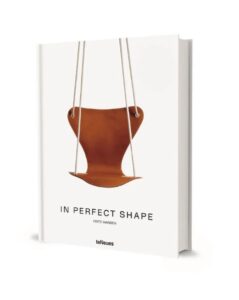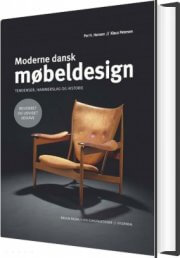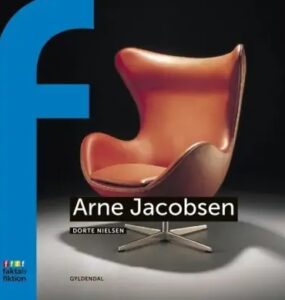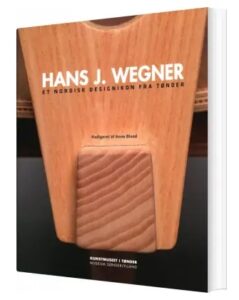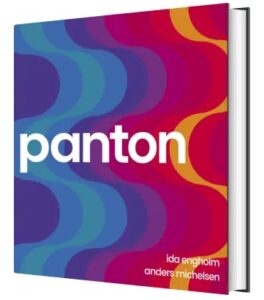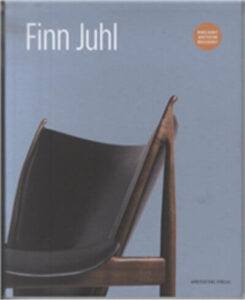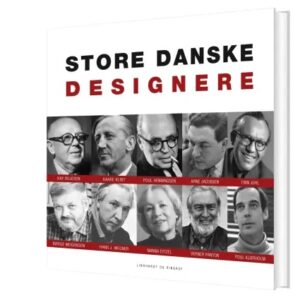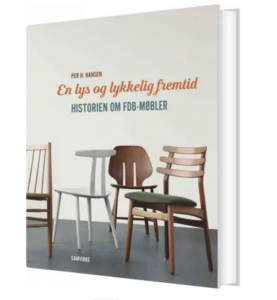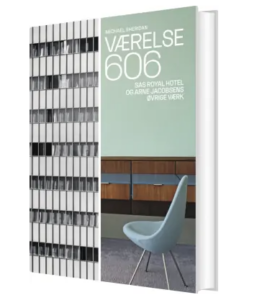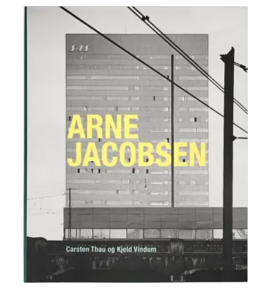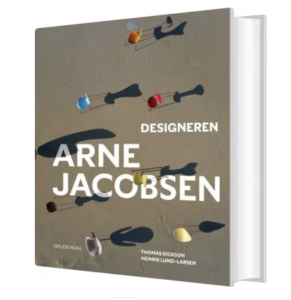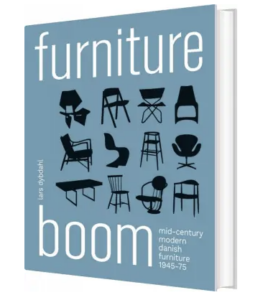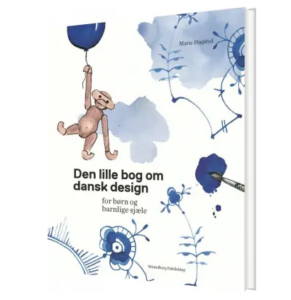danish design - Books
Do you wanna know all about the danish designers?
Find a lot of books about Arne Jacobsen, Finn Juhl, Poul Henningsen and many more Danish designers. Are you ready to be the next expert?
This visually seductive book, published in 2014, is the first ever collection of the most important Danish design objects, serving as a bible of Danish design needed in every home. Together with 32 leading researchers and journalists, editor Lars Dybdahl, head of the library and research at Designmuseum Denmark in Copenhagen, dives into the fascinating history of 101 Danish design icons.
Fritz Hansen’s Coffee Table Book, In Perfect Shape from 2017 is a collection of beautiful pictures and stories about design furniture from Fritz Hansen, collected in one book. Dive into the exciting life of the architect and designer Arne Jacobsen, and read about how he took the world by storm with the Egg™, the Swan™ and all his other iconic works. Also hear about newer designers such as Jaime Hayon and Cecilie Manz as well as the unique craftsmanship that has defined Fritz Hansen since 1872.
A classic about Danish designer furniture, their prices at auction, market trends and history – thoroughly illustrated with more than 400 superb photos. The book is written by the two largest capacities in the field, and is indispensable for anyone who wants to know what to pay for the Danish furniture classics – or what price you can get if you want to sell yourself.
The Danish architect Arne Jacobsen is internationally known for his beautiful design. But in Denmark he was not always as popular, and some thought that his buildings were ugly and too modern. He designed everything from factories to faucets, but is perhaps best known for his elegant and exclusive chairs, which are still produced and sold worldwide. Arne Jacobsen was a problem child at school, trained bricklayer, painter, refugee during the Second World War, workaholic and much more. If you would like to know as much as possible about Arne Jacobsen and his design – in the shortest possible time – then this is the book for you.
Børge Mogensen – möbel mit format is the German-language version of Børge Mogensen – furniture with attitude, published last year by Strandberg Publishing. The book places the Danish furniture architect as designer and critic in his time. Børge Mogensen was one of Denmark’s most important furniture architects, and for more than 30 years he created furniture that later came to be known as classics. The book reviews Mogensen’s exciting working methods, as well as presenting his well-known and popular furniture. The work is richly illustrated with working drawings, sketches, photos of Børge Mogensen’s furniture and houses as well as photographs from his private life.
A Nordic design icon from Tønder. Hans Jørgensen Wegner was a world-renowned Danish furniture designer. Wegner has designed countless chairs, many of which are recognizable classics. His high quality and thoughtful work, as well as a joint effort from several of his manufacturers, contributed to achieving a timeless, internationally popular Danish design.
Verner Panton is internationally canonized along with Wegner, Mogensen and Kjærholm. At the same time, he is unequaled and expressive in relation to the Danish design canon and its classic sober functionalism. The book is based on Panton as a pioneer of important innovations in post-war design history, and his work is placed in relation to a contemporary context. Panton played a central role as one of today’s most innovative innovators of production technology, materials and the experiential and aesthetic aspects of design. Both in a design-historical and contemporary light, Verner Panton is one of the great international design figures, but despite his enormous importance both design-historically and in relation to the present, there is not yet an unfolded book about his work. Lecturer and Ph. d. at the Art Academy’s School of Design, Ida Engholm, and associate professor and Ph. d. at the University of Copenhagen, Anders Michelsen, has created a thought-provoking and diverse portrait of one of Denmark’s leading designers.
Finn Juhl (1912-1989) was one of Danish furniture art’s most original designers. He gained world fame with his furnishings for the United Nations headquarters and through his international exhibitions. At the Triennale in Milan in the 1950s he won no less than five gold medals and it was during these years that he won international fame for his furniture. As a space artist, Finn Juhl achieved worldwide fame with his interiors for the UN headquarters in New York, and as an exhibition architect he was the man behind the large exhibitions of Danish applied art abroad, which created the term “Danish Design”. This classic Finn Juhl book was written by the author Esbjørn Hiort, who had a close friendship with Finn Juhl. The book thus paints a complete portrait of this furniture artist, who was among the leading figures behind the development of the concept of “Danish Design”. The book is published in a Danish and an English edition. It was first published in 1990.
Finn Juhl, together with Hans Wegner, Arne Jacobsen, Børge Mogensen and several others, was part of the epoch-making movement that lasted from approx. 1930 to the end of the 1960s, and which is called Danish Modern. This book focuses not only on Finn Juhl’s house, but also on his person as a modernist and a man of the world. In addition, it treats his period from the first experimental furniture in the 1930s through his heyday in the 1940s and 1950s to today, when Finn Juhl’s furniture must be described as furniture classics. The book is richly illustrated with photos, drawings and watercolours, several of which have not been published before. The book is also published in an English translation. ‘Finn Juhl and his house’ was written by professor at Copenhagen Business School Per H. Hansen, who previously dealt with Danish furniture architecture, among other things in the book ‘When Danish furniture became modern’ and ‘Modern Danish furniture design’ (s.m. Klaus Petersen ).
A bright and happy future – the story of FDB furniture For the first time ever, the whole story of FDB furniture, the folk design furniture that is part of our common background, is being told. The book contains unique archive material and 50 newly taken photos of FDB furniture by, among others, a. Børge Mogensen, Hans Wegner and others. The book is based on the five periods that have been decisive for the development of FDB furniture as a Danish cultural phenomenon. From the establishment of FDB Møbler in 1942 with the architect Børge Mogensen as the driving force – over the heyday of FDB furniture from approx. 1950 to the mid-1960s – until the beginning of the decline from 1965 to 1980, which, among other things, a. was caused by IKEA’s opening in Denmark in 1969. The fifth and final chapter is about FDB’s venture with the relaunch in 2013 of a handful of FDB classics (four chairs and a table system) – and the reception they received from consumers and the public. Woven into the chronological narrative, the book focuses on various aspects of the role of furniture, furniture designers and consumers. In the heyday, the FDB furniture moved into the new detached houses of teachers, nurses and librarians. But they also gained traction in public institutions such as dormitories, schools and hospitals and thus contributed to furnishing the welfare society. The book also points to the changes in lifestyle, material preferences and production methods which later helped make FDB furniture obsolete again. Now, as you know, the furniture has become modern again, and this has also become important for the FDB furniture, which are now sought-after vintage finds at marscandises and on Lauritz.com.
In the middle of Copenhagen, on the 6th floor of the SAS Royal Hotel, Room 606 is a well-preserved microcosm of the Danish architect and designer Arne Jacobsen’s definitive masterpiece. Room 606 is the only preserved interior in the SAS house that Jacobsen designed for SAS. The building housed both a luxury hotel and an airport terminal and was completed in 1960. The SAS house is the most fully cast work in Jacobsen’s career. Here he developed all his talents as a designer of furniture, lamps, textiles, gardens, typography and tableware. As a fragment that contains the entire essence of the building, Room 606 forms the starting point for a reconstruction of Jacobsen’s lost masterpiece in words and images. This well-illustrated book, which contains almost 500 photos and drawings, takes the reader on a virtual tour of the SAS Royal Hotel and airport terminal as they appeared in 1960, and traces the SAS house’s sources of inspiration to a number of earlier buildings and design objects. The exploration of Jacobsen’s work, which begins in Room 606, thus provides a general introduction to his entire career. Architect Michael Sheridan, who lives and works in New York, is an internationally recognized expert in modern Danish architecture and design and the author of a number of books on these themes, including Landmarks: The Modern House in Denmark (2014) and Louisiana – architecture and landscape (2017).
For more than ten years, the Danish edition of the monumental book about Arne Jacobsen has been sold out. The book was immediately from its publication in 1998 an overwhelming success, with extensive consequences. Thus, the book gave rise to exhibitions around the world, such as at Louisiana (one of the museum’s most visited ever), at MoMA in New York, Kunstakademie Hamburg and MoMA in Oxford. It was reviewed in newspapers from Hong Kong to New York to Los Angeles, as well as in a large number of international trade journals, just as TV broadcasts were produced in Germany, Sweden and Denmark based on the book. written by Kjeld Vindum and Carsten Thau. The book is not only about Jacobsen’s life and work, but also provides an insight into and overview of one of the most fruitful periods for Danish architecture and design. Several have highlighted its status as a ‘bible’ for those who want to understand what was going on in this unusual era, understand the ideals and currents of the time in relation to the goals and challenges of the profession in the 20th century.
The complete story of Arne Jacobsen’s work as an industrial designer. Based on the works, unrealized projects, correspondence and other sources, his important work in this area is described. The project is ambitious in that there is a lot of prior research behind it. The authors have gone deep into the archives to find drawings, photos and letters that together create the image of Arne Jacobsen as one of Denmark’s greatest designers. The book is richly illustrated, comes out in a generous graphic design and is supplied with a comprehensive register of Jacobsen’s several hundred design projects. Arne Jacobsen’s furniture, lamps, textiles, clocks, table tops and building adaptations stand as significant beacons in international design history.
What was PH thinking when he designed his iconic lamps? Why is the Margrethe bowl a good design” And what is design really” ‘The little book on Danish design’ conveys the designers’ work with problem, process and product at eye level with children. It is about aesthetics and beauty, but mostly about the joy of good craftsmanship, the love of the material and, in PH’s words, “to dare and to play”. The book tells the story behind the good design that we all know and surround ourselves with. We come across both classics such as the iconic PH lamp, Royal Copenhagen frame and the Kay Bojesen monkey. The book is written in a language so that both young and old can participate. Marie Hugsted is a trained textile designer and teacher, and has for many years communicated Danish design at home and abroad, as well as written teaching material about design for Designmuseum Danmark and Trapholt.
With this Coffee Table Book, sit back, relax and examine some of the most iconic chairs in history. A hit with design lovers and collectors, this reliable compendium presents each chair together with important information about the designer and their work, from Alvar Aalto to Eva Zeisel, from Art Nouveau to International. More than any other piece of furniture, the chair has been exposed to designers’ wildest dreams. The particular curve of a backrest or the twist of a leg, the angle of a seat or the color of the entire chair, each element reflects the stylistic consciousness of an era.
Experience 10 Danish contemporary artists behind the scenes. We come with them on their creative journey. See ongoing and completed projects in this Coffee Table Book. Solve about their history.
